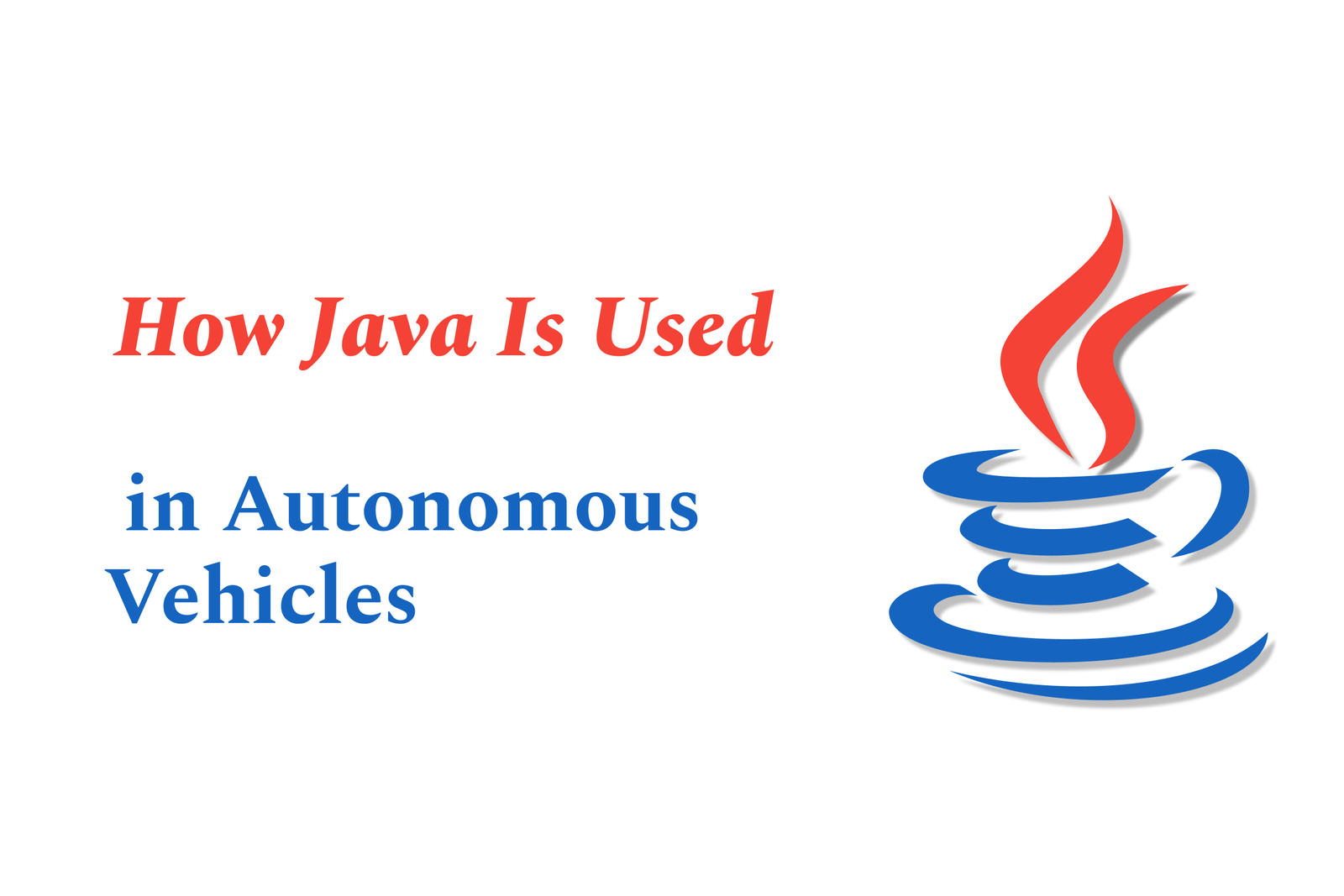How Java is Used in Autonomous Vehicles
Java powers autonomous vehicles by enabling robust, secure, and platform-independent software essential for real-time sensor data processing, AI-driven decision-making, and seamless vehicle connectivity, supporting key functions like navigation, safety systems, and infotainment.
How Java Is Used in Autonomous Vehicles
1 ) Introduction to Java in the Automotive Industry
Java has become a central programming language powering the automotive industry's technological evolution. It supports the development of smarter, more efficient vehicles by enabling software solutions that enhance vehicle performance and innovation.
2 ) Benefits of Java for Automotive Applications
Platform Independence: Java’s “write once, run anywhere” capability allows software to run across various vehicle platforms via the Java Virtual Machine (JVM), simplifying development and deployment.
Robustness and Security: Built in security features and robustness are crucial as vehicles become more connected and autonomous, protecting against software failures and cyber threats.
Scalability and Performance: Java can handle complex automotive systems involving large data volumes, supporting real time processing required by advanced driver assistance and autonomous driving. JVM enhancements like Just In Time compilation optimize runtime performance.
Rich Ecosystem: Java’s extensive libraries and tools accelerate development, enabling engineers to build sophisticated automotive software more efficiently.
3 ) Key Applications of Java in Autonomous Vehicles
Infotainment Systems: Java is used to create integrated infotainment platforms that support multimedia, navigation, voice recognition, and smartphone connectivity, enhancing the driver’s in car experience.
Telematics and Connectivity: It facilitates vehicle to vehicle (V2V) and vehicle to infrastructure (V2I) communications, allowing real time data exchange critical for road safety and intelligent traffic management.
Advanced Driver Assistance Systems (ADAS): Java supports the real time algorithms behind adaptive cruise control, lane keeping assistance, and collision avoidance by processing sensor data quickly and reliably.
Autonomous Driving: Java’s secure, scalable, and robust environment is essential for the development of autonomous driving features, including sensor integration, AI algorithms for decision making, and safe system control.
4 ) Conclusion
Java software engineering is revolutionizing autonomous vehicles by providing a secure, scalable, high performance platform that supports the entire spectrum of automotive software—from infotainment to full self driving capabilities. Its platform independence and rich ecosystem make it an invaluable tool in advancing vehicle technology into the future.
https://justacademy.in/news-detail/javafx-vs-swing:-what?s-relevant-in-2025?
https://justacademy.in/news-detail/why-learn-ios-development-in-2025?
https://justacademy.in/news-detail/react-native-vs-flutter:-developer-opinions-from-2025
https://justacademy.in/news-detail/java-in-enterprise-messaging-systems
https://justacademy.in/news-detail/how-flutter-is-dominating-cross-platform-app-development
Related Posts
In 2025, top Angular libraries offer modern, feature-rich components and tools for building dynamic web apps. From powerful data grids to low-code platforms like UI Bakery, these libraries enhance development speed, UI design, and scalability, making them essential for Angular developers.
Migrating from AngularJS to Angular 17 involves gradually upgrading your app by running both frameworks together using tools like ngUpgrade, rewriting components in TypeScript, and adopting Angular’s modern architecture to enhance performance, maintainability, and long-term support.
Angular state management tools help organize and handle app data efficiently, improving scalability and maintainability. Popular options include NgRx for robust, RxJS-based patterns, and newer Signal Store solutions that offer simpler, reactive approaches integrated tightly with Angular’s latest features.
RxJS in Angular empowers developers to manage asynchronous data streams with powerful operators like `forkJoin`, `combineLatest`, and `zip`. Mastering these key operators in 2025 is essential for building efficient, reactive applications that handle complex event sequences seamlessly.
Angular performance optimization in 2025 focuses on improving app speed and responsiveness by using techniques like OnPush change detection, lazy loading, efficient data caching, and AOT compilation. These practices reduce load times, enhance user experience, and ensure scalable, fast Angular applications.
In 2025, Angular remains preferred for large-scale, enterprise apps with its robust, all-in-one framework, while Vue attracts developers seeking simplicity and fast development for smaller projects. Both frameworks excel, with choice driven by project needs and team expertise.
Angular Signals are a new reactive primitive in Angular 16 that enable fine-grained, efficient change detection by automatically tracking dependencies and updating only affected parts of the UI. They simplify state management and boost app performance, revolutionizing Angular's reactivity model.
Angular interview questions to prepare in 2025 focus on core concepts like components, directives, data binding, routing, and dependency injection, along with TypeScript mastery and latest Angular features to ensure strong practical knowledge for building scalable, efficient web applications.
AngularJS reached its official end of support in January 2022, meaning no further updates or security patches. To ensure app security and performance, developers should consider migrating to modern Angular versions or seek third-party long-term support options if immediate migration isn’t possible.
The Angular Roadmap 2025 highlights upcoming features focused on improving developer experience and performance, including zoneless Angular, Signals integration, enhanced Forms, async data handling, improved HMR, and expanded Angular Material/CDK enhancements, driving modern, efficient web app development.










